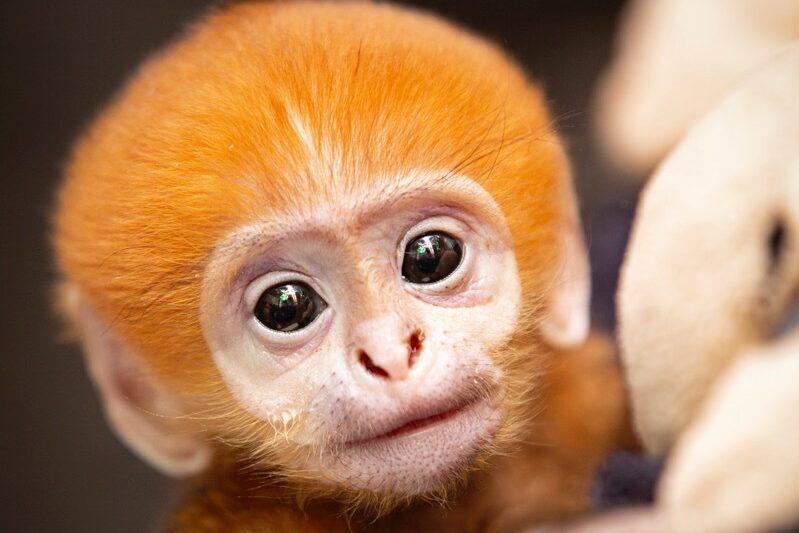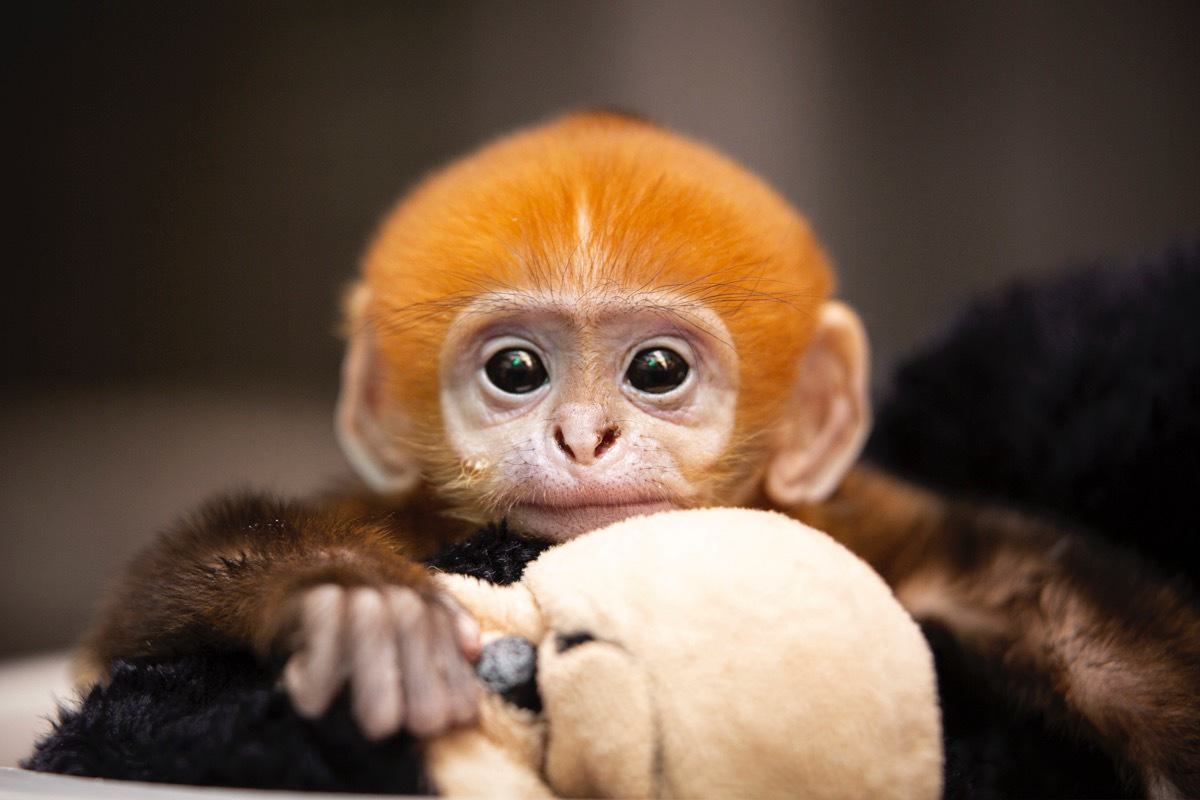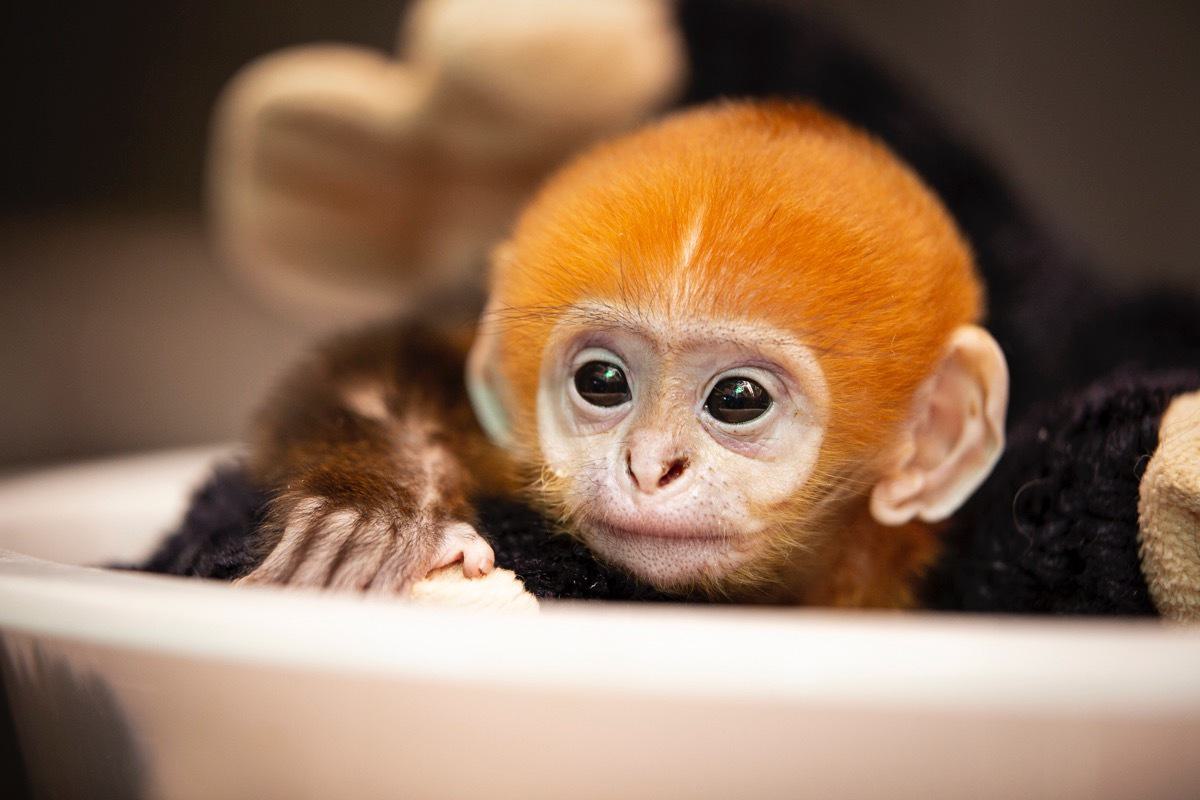Just in time for Halloween, we share with you our newest and cutest li’l pumpkin-haired baby, Rhubarb! The 1-month-old female Francois’ langur was born on September 30, 2022, to mom Dolly and dad Deshi at the Michael and Quirsis Riney Primate Canopy Trails at the Saint Louis Zoo. Rhubarb is the first Francois’ langur ever born at the Saint Louis Zoo and an important birth for this endangered species. The langur family are bonding in a private area of the habitat and may not be on view.
#NoFilter on these photos — her hair really is pumpkin orange! Francois’ langurs, (pronounced frahn-SWAH LANG-err), a species of monkey, are born with bright orange hair. Adult female members of the group will assist in caring for and carrying the young, known as ‘allomothering’, and the baby’s stand-out color helps the adults in the group keep track of the newborn. After about six months, they have fully transitioned to their less-conspicuous adult coloring, which is mostly black.
Dolly developed some health issues shortly after giving birth and both her and Rhubarb (pronounced ROO-barb) required round-the-clock care and supplemental feedings at times. The entire team of dedicated primate keepers altered their schedules in order to provide 24-hour care for this new baby, making sure that she was healthy, comfortable and well-fed until Dolly was healthy enough to care for her on her own again.
Throughout the process, staff consulted regularly with other zoos across the country and were able to utilize their valuable langur expertise to successfully navigate the complications of the birth. Dolly is now fully caring for and feeding Rhubarb on her own and the bond between the two is strong.
“Dolly has been a phenomenal mother and, through the benefit of her having a great relationship with the keeper staff, has been incredibly accommodating to the supportive care that she and Rhubarb needed to get back on track,” said Ethan Riepl, Primate Keeper and Francois’ Langur Species Survival Plan Vice Coordinator, “She deserves all the credit in the world for our success.”
The pair was recently reintroduced to the other langurs: Sydney, a 15-year-old female Francois’ langur, who helps out with Rhubarb giving Dolly a break now and then; Deshi, (pronounced DEH-shee), the 10-year-old father, who is not as hands-on, but watches over and protects the group; and Marc, an older spectacled langur male.
Dolly, Sydney and Deshi were introduced in 2014. Deshi was paired with each female in a breeding recommendation in 2019 by the Association of Zoos and Aquariums Francois’ Langur Species Survival Plan, a program responsible for maintaining a genetically healthy population of Francois’ langurs in North American zoos. Breeding was on hold until the new, spacious outdoor Primate Canopy Trails habitat opened in 2021. This exceptional new home for monkeys and lemurs includes eight large new habitats as well as a Primate Care Center with specially designed indoor housing.
"For any species like langurs that practice allomothering, proper maternal care is an important skill for females to learn and to gain experience in,” Riepl stated, “With this being our first ever langur birth here at the Saint Louis Zoo, Rhubarb has been a valuable addition to our langur troop and has provided both Dolly and Sydney with a great opportunity to develop those skills.”
About Francois Langurs and Conservation
The Francois’ languris an endangered species native to tropical forests of Southeast Asia. They are tree-dwelling social animals that usually live in family groups. It is thought that over 50% of all Francois’ langurs in the wild have disappeared within the past few decades. Hunting by people and habitat destruction are the main threats to this species.




